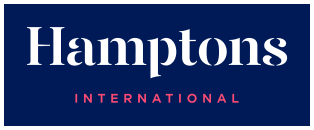Insights and rental market update
Category Rentals
According to a recent study by PayProp, the rental market in South Africa consists of almost three million households.
The first quarter of 2023 has delivered positive rental growth for landlords at a rate which is the best that it has been in over three years. The average national rent increased by some 4.2% during the first quarter.
By comparison, rentals declined by 0.1% in the first quarter of 2021 and increased by 1.8% in the first quarter of 2022. Following the lows of 2022, we have seen the rental escalation rate improve incrementally month-on-month since 2021, and throughout 2022.
While positive news for landlords, it is still not keeping up with inflation which declined to 6.8% in April from 7.1% in March.
While Gauteng continues to record below average rental growth, the other main metro areas such as the Western Cape and KZN (surprisingly) achieved 5% growth which is slightly above average. Rental rates in the Northern Cape continue to surge and the province achieved 10.2% which is more than double the national average.
Regional rental growth rates
Regionally, the Western Cape remains the most expensive in terms of monthly rentals at an average of R9,872 per month while the North West is the most affordable at an average of R5,738 per month.
The highest rental growth was achieved in the Northern Cape with 10.2% growth, and the lowest was the Free State where rents actually declined by 1.1%.
Western Cape – increased by 5% to R9 872, the most expensive province with the highest volume of rentals above R7,500 to R15,000-plus (13.8% above R15,000 per month).
Northern Cape – increased by 10.2% to R9 248. While rents have been rising, only 10.7% of rentals achieve upwards of R15,000 per month.
KwaZulu-Natal – increased by 5% to R8 801. The province continues to attract a broad spectrum of tenants with over 10% of rentals now falling above R15,000 per month.
Gauteng – increased by 3.1% to R8 641. 36% of rentals range between R5,000 and R7,500 per month, and there is a significantly higher number of expensive rentals when compared to the national average.
Mpumalanga – increased by 5.1% to R8 268 and remains one of the more affordable areas with 34.5% of rental properties falling in the R5,000 to R7,500 per month range.
Eastern Cape – increased by 4.5% to R6 650. The province remains one of the most affordable provinces for tenants with a high number of property rentals below R2,500 per month.
Free State – declined by 1.1% to R6 348, the only province where rents declined and still one of the most affordable for tenants with 37.4% of rentals being between R2,500 and R5,000 per month.
North West – increased by 3.9% to R5 738. While more than half of all rentals fall into the R1,000 to R2,500 bracket, average rents are rising and upper rental brackets are getting more populous.
Limpopo – increased by 6.5% to R7,657. Still one of the more affordable provinces for tenants with the majority of rental properties ranging between R5,000 and R7,500 per month.
Rental trends observed this year
Tenants spend around 28.8% of their income on rent, up from the previous 28.3%.
Tenants in arrears have risen from 18.1% to 18.3% while the average amount owed as a percentage of the average monthly rent has worsened, although this is still better compared to the pandemic levels.
Affordability is a big driver of the demand for rental accommodation followed by renting for other reasons such as moving to a new area or city, or simply needing to stay in temporary accommodation.
Author: Gina Meintjes




 Beyond your expectation
Beyond your expectation